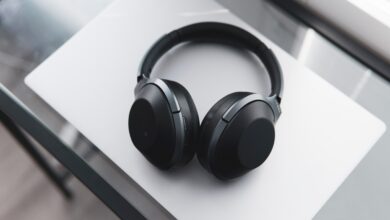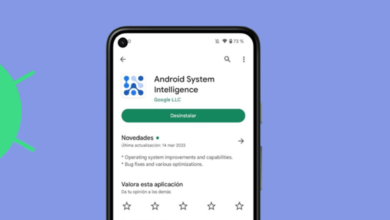How to Record Phone Calls on Android (No Root)?
Recording phone calls on Android devices without root access can be challenging, especially with the restrictions and policies introduced in recent years. The good news is that several user-friendly applications and built-in features can help you achieve this without needing to dive into complex technicalities.

However, it’s important to note that the ability to record calls may depend on your phone model, the version of Android you’re using, and your geographical location—some regions have strict laws regarding call recording. In this guide, I’ll walk you through several methods to record calls on Android without rooting your device, step by step.
But before diving into the workarounds and discussing third-party apps to record phone calls, let’s first cover why recording calls on Android has become more complicated compared to the past. This will help you choose the best solution and avoid any legal issues.
Lastly, please remember that this guide is strictly for educational purposes, and Appuals does not endorse any non-consensual call recording without the other party’s knowledge, as this is illegal in some regions. Proceed with caution.
Complications with Call Recording, Google’s Policy Changes, and Legal Considerations for Android
- As of May 11, 2022, Google implemented a significant policy change that prohibits third-party call recording apps from using the Accessibility API for recording calls. This decision was made to close loopholes that allowed developers to exploit this feature for unauthorized purposes. The Accessibility API is intended for apps that assist users with disabilities, not for call recording.

- With Android 10 and later versions, Google tightened restrictions even further. Many third-party apps can no longer effectively record calls because they can only capture one side of the conversation or fail entirely. This has led to a decline in the availability of reliable call recording solutions for users on newer Android versions.
- While some Android devices come with built-in call recording features, their availability often depends on the region and carrier. Moreover, many devices only allow automatic recording for unknown numbers, further limiting user options.
- The legality of recording calls varies significantly by location. In the United States, federal law permits one-party consent (meaning only one participant needs to know about the recording). However, some states require all parties to consent. Users must be aware of these laws to avoid legal repercussions.
- Recording calls raises ethical questions about privacy and consent. Users should always inform the other party that the conversation is being recorded, both as a courtesy and to comply with legal standards.
Now that we understand the complications of recording phone calls on the latest Android versions without root access, let’s discuss some methods to help you achieve this.
Method 1: Using Built-in Call Recording Features
Some Android devices come with a built-in call recording feature.
Check Compatibility
- Ensure your phone runs Android 9 or higher and has the latest version of the Phone app.
- Be aware that call recording may not be available in all regions due to local laws.
Recording a Call
- Launch the Phone app on your device.
- Start a call as you normally would.

- During the call, tap on the Record button. On some devices, this might be in a menu (like Samsung).

- To stop, tap the Stop Recording button when you’re done.

- Find your recordings in the call history or a designated folder within the app.

READ NEXT: How to Turn Off Google’s Call Recording Announcement?
Method 2: Using Google Voice
If your device doesn’t support built-in recording, Google Voice is a great alternative, especially for incoming calls.
Setting Up Google Voice
- Install the Google Voice app from the Play Store.

- Open the app and log in with your Google account.

- Tap on the gear icon for settings.
- Under Calls, check the box for Call Options to enable recording.

Recording Calls
- When someone calls your Google Voice number, answer it.
- During the call, press 4 on your keypad to start recording. An announcement will confirm that recording has started.
- Press 4 again to stop recording before hanging up.
- Recordings can be found in your Google Voice account under recorded calls.
Method 3: Using Third-Party Apps
If neither of the above methods works for you, third-party apps are another option. Here are two popular choices:
1. Automatic Call Recorder ACR
Installation and Setup
- Download Automatic Call Recorder ACR from the Play Store.

- Open the app and allow it access to your contacts and microphone.

- Enable Accessibility Service (for Android 10+):
- Go to your device’s settings.
- Navigate to Accessibility and turn on the service for Automatic Call Recorder.
Recording Calls
- Open Automatic Call Recorder.
- Go to Settings and enable call recording for incoming and outgoing calls.

- The app will automatically record calls based on your settings.

- Open the app to view and manage your recordings—save them, delete them, or share them as needed.

2. Cube ACR
To effectively use Cube ACR for recording calls on your Android device, especially in light of recent restrictions, you need to set up both Cube ACR and its companion app, Cube ACR Helper.
Installation and Setup
- Start by downloading Cube ACR from the Google Play Store.

- Launch the app and grant it access to your contacts and microphone to enable call recording.

- Tap on Install Helper.

- Since Cube ACR may not function optimally on newer Android versions without additional support, download the Cube ACR Helper APK from their official website.

- Go to your device’s Settings, then navigate to Security or Apps & Notifications. Find Install unknown apps, select your browser or file manager, and enable Allow from this source.
- Locate the downloaded APK file for Cube ACR Helper and tap on it. Follow the prompts to install the app.
- Open Cube ACR Helper.
- Grant the necessary permissions for the app to function correctly by allowing microphone, storage, and phone access.

- Tap Allow for each permission request when prompted; if you accidentally deny any, you can grant them later through your device settings.
- Tap on the option labeled Enable App Connector.
- Tap Go to Apps and select Cube ACR Helper.

- Tap the three-dot menu (⋮) at the bottom.
- Enable the option labeled Allow restricted settings by tapping it and confirm any further prompts by tapping OK.

- Go back to the Cube ACR Helper app and tap Go to Accessibility.

- Select Downloaded apps, and from the list of downloaded apps, select Cube ACR Helper.

- Toggle the option labeled Use Cube ACR app connector to On to enable integration for call recording.

- Go back to Cube ACR Helper. The setup is now complete, and the two apps are connected. Tap Open Cube ACR.

- Go to the Settings menu within Cube ACR. Here, you can adjust the audio source to enhance recording quality and select other preferences as needed.
Recording Calls
- You can choose to record all calls automatically or manually start recordings during calls based on your preference.
- If set to automatic, Cube ACR will begin recording without any additional action required from you when you make or receive calls.

- Make sure both Cube ACR and the Helper are running in the background when you start the call you want to record. The app will automatically record the call.
- Open the Cube ACR app to find all recorded calls stored within the application for easy playback and management.
Method 4: Using External Devices
If you encounter issues with call recording through apps, consider using an external device as a workaround:
- Place your phone on speaker mode during the call.
- Utilize another smartphone or digital recorder with a microphone to capture both sides of the conversation clearly.
- After recording, transfer files from your external device to your Android phone if needed for storage or playback.
Recording calls on Android without rooting is definitely achievable through built-in features, Google Voice, third-party apps like Automatic Call Recorder and Cube ACR, or even external devices if necessary. Always remember to check local laws regarding call recording before proceeding, as legality varies by region.





